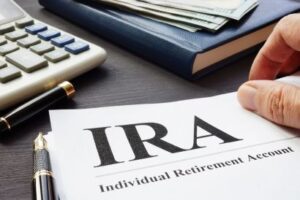You must have a functional account that is easy to use to efficiently manage your retirement savings. Discover how to open a successful self-directed IRA.

By Dan Coconate
Special to Financial Independence Hub
Many share the goal of achieving financial security in retirement, yet the path to reaching this milestone is often full of uncertainty and complexity. Learning about smart investing is one of the most effective strategies for ensuring a stable financial future.
A self-directed Individual Retirement Account (IRA) offers Americans a flexible and powerful vehicle for retirement savings, providing the opportunity to diversify your portfolio beyond traditional stocks and bonds. Learning how to open a successful self-directed IRA presents a unique advantage if you are seeking control over your retirement future. [Editor’s Note: Available in the U.S., IRAs are most comparable to Canada’s RRSPs.]
Choosing the right Custodian
The choice of custodian is vital in setting up your self-directed IRA. A custodian is an IRS-approved financial institution responsible for holding and safeguarding your IRA’s assets. Since not all custodians offer the option to invest in all asset types available to self-directed IRAs, selecting one that fits your investment strategy is essential. Custodian fees can vary widely and may include account opening fees, annual maintenance fees, transaction fees, and asset holding fees. These costs can significantly impact the overall returns on your investment, especially over the long term.
Funding your Self-Directed IRA
Funding your Self-Directed IRA is a crucial step toward building your retirement nest egg. A direct transfer from an existing IRA into your self-directed IRA is often the most straightforward method, involving minimal paperwork and no tax implications. A rollover from a 401(k) can also deposit substantial funds into your self-directed account, but it’s important to be aware of the rollover windows and potential tax consequences.
Understanding the Rules & Regulations
Understanding the rules and regulations that govern self-directed IRAs is not just a recommendation; it’s a necessity for ensuring the long-term success and compliance of your retirement savings account. This comprehension should include familiarizing yourself with prohibited self-directed IRA transactions to understand the tax implications, potential penalties, and fees of your investments. Learning these rules will ensure that you remain compliant while maximizing your IRA’s potential.
Choosing your Investments Wisely
You must choose wisely to financially prepare for retirement with the freedom to invest in multiple assets. Making informed investment decisions is one of the most crucial strategies for your self-directed IRA’s success. This decision must involve researching potential investments, understanding the market, and considering your overall retirement strategy. Strategic diversification and due diligence play key roles in achieving long-term financial growth and security.
Monitoring & Adjusting your Investments
The process of monitoring and adjusting your investments in a self-directed IRA should be systematic and flexible, allowing for timely responses to evolving market conditions and personal financial goals. Establishing a regular review schedule, quarterly, bi-annually, or annually, is essential for tracking the performance of your investments. You should also assess your asset allocation and ensure it aligns with your risk tolerance and time horizon as you inch closer to retirement.
Opening a successful self-directed IRA involves understanding its unique attributes, choosing the right custodian, navigating rules and regulations, funding your account appropriately, and continuously monitoring your portfolio. With careful planning and diligent management, a self-directed IRA can be a powerful tool to secure your financial future in retirement. Ultimately, a self-directed IRA’s success hinges on the investor’s commitment to active management and a willingness to learn and adapt.
 Dan Coconate is a local Chicagoland freelance writer who has been in the industry since graduating from college in 2019. He currently lives in the Chicagoland area where he is pursuing his multiple interests in journalism.
Dan Coconate is a local Chicagoland freelance writer who has been in the industry since graduating from college in 2019. He currently lives in the Chicagoland area where he is pursuing his multiple interests in journalism.

